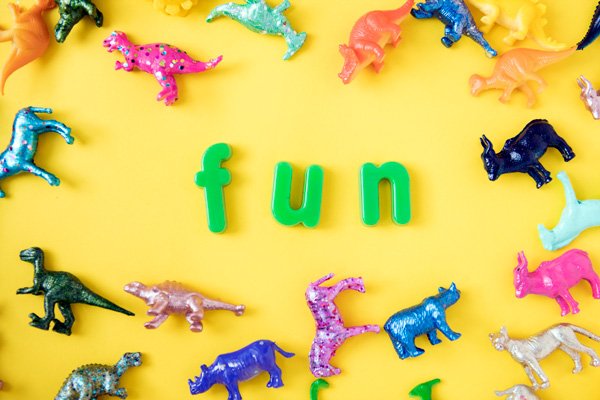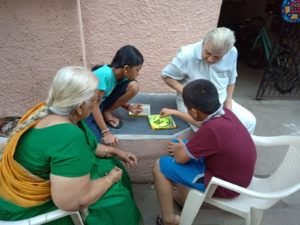
Play is important to healthy brain development. It is through play that children at a very early age engage and interact in the world around them.
There is clearly a great need for parents and educators alike to be sensitized to the importance of play in the child’s development.
In order to save Play, there was a call for innovative educators as Play Ambassadors.Powered by Play Futures www.playfutures.net, LIFE ( Leadership Initiative for Educators) selected 42 applicants for this program (Play Ambassador League).


The aim of this study was to determine if the way the children play will bear any differences, given similar stimulus, based on different socio – economic and cultural set ups.
The Play Ambassador League was hosted on PlayFutures as a private work group from 2nd July to 11th August.
Play participants were welcomed into a truly playful and joyful environment to kick off the formal program.
The program kicked off with ambassadors introducing themselves to the other group members. They were asked to take a trip down memory lane to recall their special childhood memories and the experiences of play. With this begun the beautiful journey of understanding play through the tasks allocated for six weeks. There were many insights that were derived at the completion of the PAL program.
Insight 1: Play gives immense joy and pleasure.
Observations:
We learnt about members’ most joyful experience of play that still make them smile, Eureka moments in play, and the playful activities for which they would be willing to give up their sleep, food and most importantly their phone. A few great answers to the last point were cricket, bursting bubble wrap, outings with family, travelling and building sandcastles!
Theory: This helps us to connect with the theory that Play boosts your natural feel good chemicals
In Play, an adult can become like a child, completely absorbed in the here-and now. In the presence of something good, the brain releases four main ‘feelgood’ chemicals – endorphin, oxytocin, serotonin, and dopamine.
Application: PLAying, your way to happiness.

Insight 2: The vehicle of curriculum or learning is play .
Having recognized the positive outcomes of play, it was important to validate the same through the educators’ valuable inputs and experiences. A survey was extended to 350 educators.
Observations: The majority (a total of 334) agreed that play is an indispensable component of teaching and curriculum? However took our attention to the following:
- 50% limit children’s play because of concerns of accident, injuries and any other reasons.
- More than 50% felt that the environment is not conducive for play.
- It was expressed that children climbing trees and getting covered in mud romping by streams used to be common sights across the country. Natural or “free” play was greatly encouraged, and many children would play happily without adults for hours. But fears of “stranger danger”, a growing love affair with computer technology, busier roads and fewer wild environments mean children are more likely to stay indoors.
“It is paradoxical that many educators and parents still differentiate between a time for learning and a time for play without seeing the vital connection between them.” remarked Leo F. Buscaglia. Play is looked at something as completely non curricular, considered as exclusively outdoor play. It is very important for all of us to change the way we look at play.
Theory: Swiss biologist and psychologist Jean Piaget (1896-1980 theory is based on the idea that the developing child builds cognitive structures.
- Jean Piaget believed that childhood plays a vital and active role to the growth of intelligence, and that the child learns through doing and actively exploring.
He said that children are active learners not passive learners •
- Children use first hand experiences and prior experiences to develop their learning and understanding of the world •
Practice: Children need to
1. a) Experiment actively with materials and
2. b) Experience things in the real world to develop thought.
LIFE once again debunked the myth that play and curriculum do not go hand in hand. It is thus, our sincere endeavor as educators, to provide the appropriate stimulation and nurturing environment of play.

Insight 3: Parent, Family, and Community Engagement — Critical Link to Student Success
Insight : There is a strong link between the hours spent playing together and the happiness of families
Parents, teachers, children have to work in unison for providing nurturing and participative learning environment.
Observations: A survey was conducted with parents (to understand parent attitudes, knowledge and awareness of play which was a group activity.
There were overall 8 groups. Each group surveyed nearly 50 parents to understand the state of play today .
Parents admit that playtime is squeezed and that they tend to get distracted by life’s other demands.
In alignment with the report survey or the study is the Research which says
“Play is a cherished part of childhood that offers children important developmental benefits and parents the opportunity to fully engage with their children,” concluded a 2007 study analysis, published in the Journal of pediatrics.
Practice: Playing together makes families happier, closer and less stressed.
“I always have to remind people that the biggest ingredient in school performance is the teacher; that’s the biggest ingredient within the school. But the single biggest ingredient is the parent.”
—Barack Obama, 44th President of the United States
Insight 4: “The Parent Connect” adds a critical link between schools and children. Without positive parent partnerships, both kids and schools miss out on a wonderful opportunity to strengthen the parent-school partnership.

Apart from the parent’s survey, the second group task involved organizing a special event at their center / community involving parents / grandparents/ siblings for a play date with their young ones. They could plan the activities as per convenience and available resources.
Observations on Playdate as reported by the Play Ambassadors
- Kids were made to understand that play can happen without toys. Example: Bat and ball can be played (with paper plate and imaginary ball).
- Dance and music does wonders to relationship. It not only charges up the environment but is best soothing way of distressing adults.
- This activity removes all the wiggle of the busy body.
- As a music and movement is a need not a want of the child. Lot of chattering and suggestions happen over dance between parent and child. Positive emotions multiply in leaps and bounds between adults and child.
- Children learnt about Self control. The art of losing and winning which is an important life skill is introduced.
- Some children commented that they are very happy as their parents will play with them after a long time.
- The event helped mom’s to understand how and what to play with the kids.
- The event helped build deeper connections between mom and child.
Theory: Epstein model of family school connections
The theories explain the motivations to remove boundaries between schools and families.
“The best classroom and the richest cupboard is roofed only by the sky“
– Margaret McMillan
Practice: To help children grow into caring, capable adults through a partnership with parents through events, workshop, play based activities and projects designed to build on family strengths.
Participating in events, boost children self-esteem and they grow out to be confident individuals.
Insight 5: Free flowing environments allow space for more child-led, open-ended play.
Observations: The 5th week of PAL revolved around connecting Play and Nature.
-
- Some Anecdotes from Play Ambassadors.
- They spent a lot of time roaming around, collecting different objects
- The children had fun remembering the names of everything that they had seen.
- It is amazing how much they can see and create and wonder within a short time – true learning through play!
- Initiated to count the prints of horseshoes on the ground.

Fully enjoyed the exercise opportunities of the nature made equipment and playgrounds. It was a very diverse activity without instructions led purely by their enthusiasm!
Each hands-on, open-ended, and sensory oriented experience spark discovery and imagination; encourage conversations and collaborations; and allow young children to develop a sense of wonder and get to know the natural world.
With an overwhelming response to the PAL program over the previous weeks, the Play Ambassadors excitedly looked forward to the planned webinar session presented by Louise Zimanyi on her exploration 6 topic of Green Blue Spaces where Play and Learning are natural.
It was discussed how outdoor play experiences can be best designed to educate children about the environment whilst also positively impacting the healthy development of the child.
Research: Why does being near water set our minds and bodies at ease?In BLUE MIND, Wallace J. Nichols talks about how proximity to water can improve performance, increase calm and diminish anxiety.
The program then introduced ateliers, a space for children to express themselves artistically using the language of art.
Observations: The members created their own ateliers, a lesson plan and the activities began with providing children the settings and materials. Children could decide themselves what to use and at first some members observed the children being confused until encouraged by 1 or 2 other children. It resulted in children involving themselves in activities. Younger children mostly ended up choosing hand painting, however, older children chose brushes, tapes, leaves and others gathering natural materials to make different objects and painted pebbles.

“One thing lead to the other and the journey of ‘being curious’ lead them create.”
Research: “Through conscious use of space, color, natural light, attractive and appropriate learning materials and documentation of children’s work, the environment serves as another teacher and is inviting to children, teachers, families, and visitors.”
(Putnam Indian Field School Curriculum, 2017)
 Theory: In Reggio language, the physical environment is referred to as The Third Teacher as it has the capacity to engage the child as if it were a live teacher.
Theory: In Reggio language, the physical environment is referred to as The Third Teacher as it has the capacity to engage the child as if it were a live teacher.
It is known that the greater the range of experiences that are presented by a play environment the more children will naturally explore and learn through play.
The vital ingredients for these experiences are loose parts: attractive, flexible materials which children can readily change, manipulate and control for themselves.
These elements lead to a high level of ownership which is a powerful ingredient in providing a positive play and learning experience for a child.
Practice: Natural materials provide an infinite number of possibilities and convey a sense of calmness and tranquility for both children and adults.
Our education environment should be inviting and cultivate children’s curiosity, wonder and imagination.
Conclusion: Play is FUNdamental, not optional
In our busy lives dominated by hectic schedules, long commutes and too much screen time, ‘playtime’ often falls by the wayside – for children and parents alike! However, just like eating right and exercising fuels the body and mind, play is an important part of human development and for children, play plays a pivotal role in ensuring they grow up to be well-balanced and successful in life.
On the other hand, play deprivation has a detrimental effect on brain development. Research has shown that as there has been a decline in children’s opportunity for free (unstructured) play, so there has been a rise in child mental health problems.
